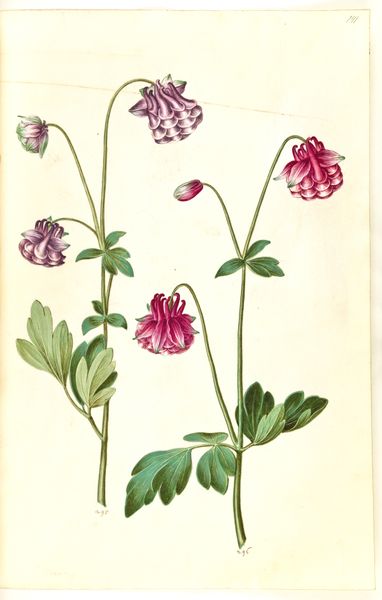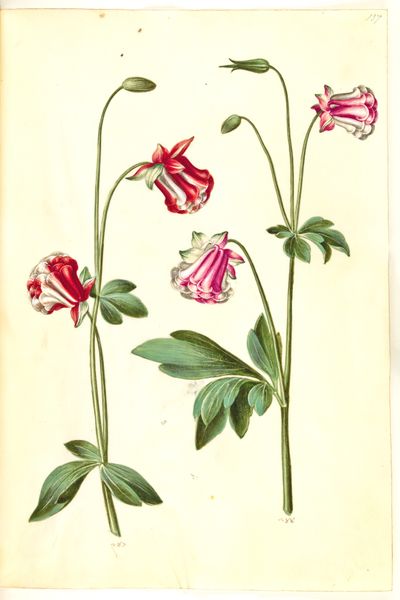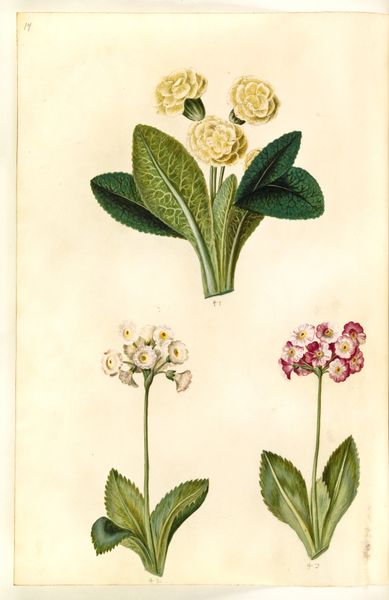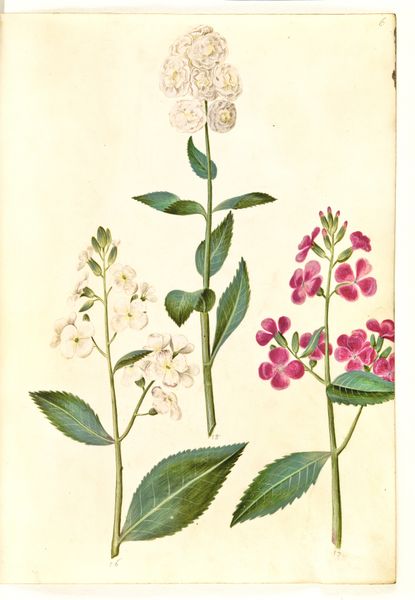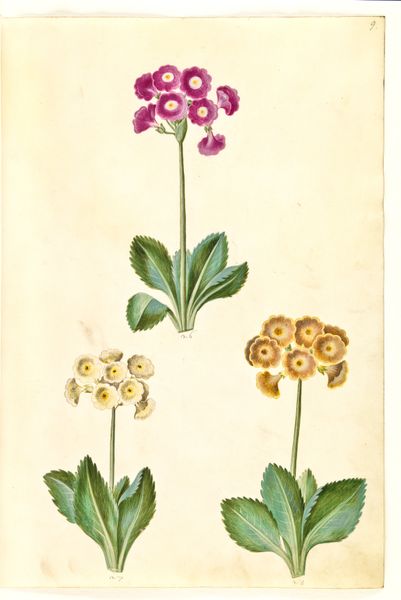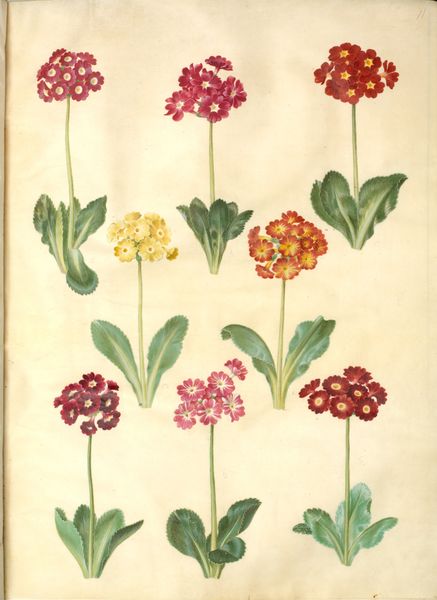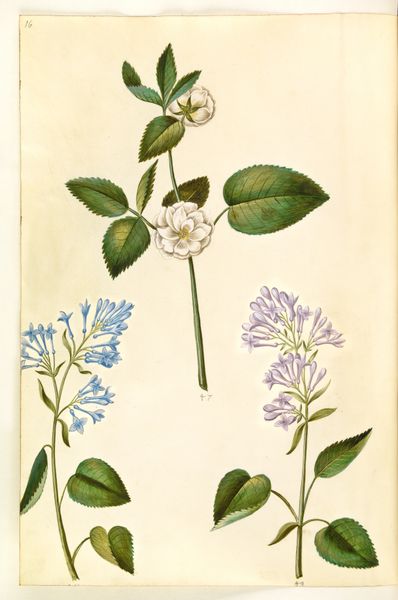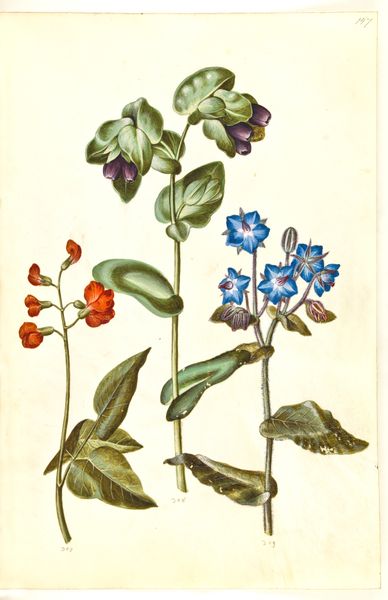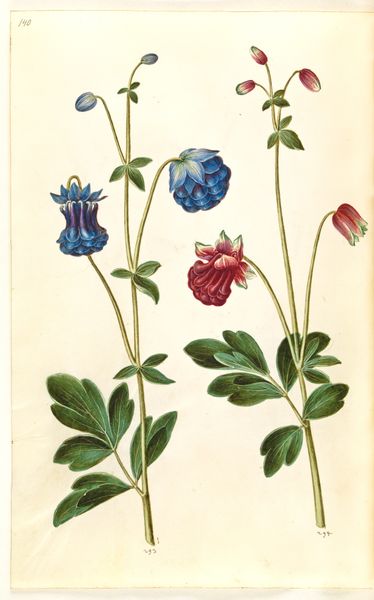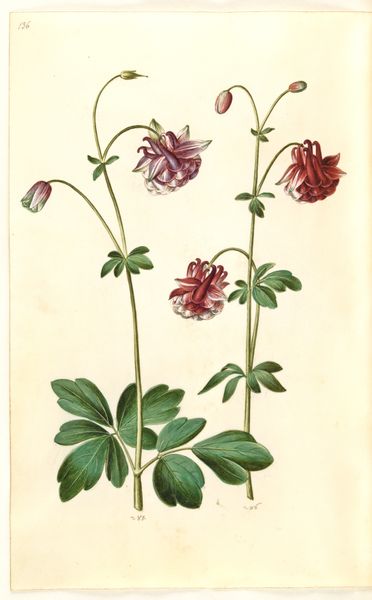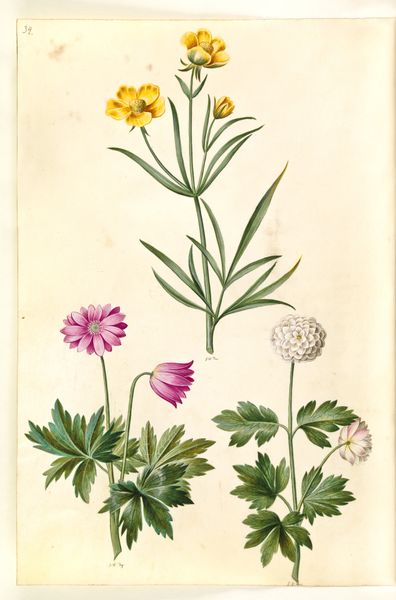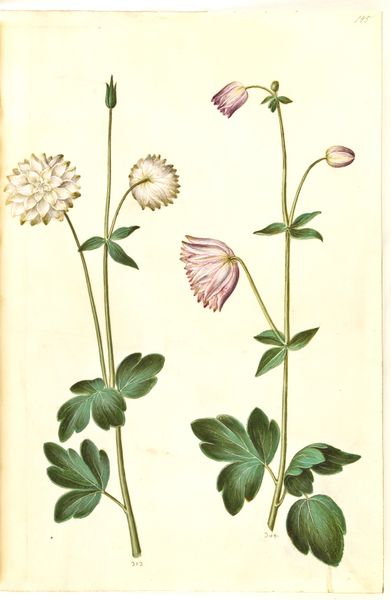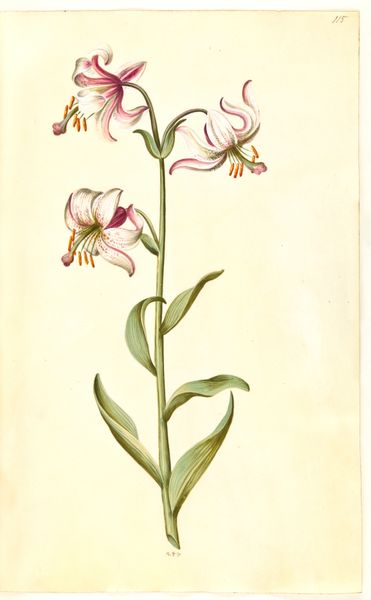
Mirabilis jalapa (vidunderblomst); Bellis perennis (almindelig tusindfryd) 1635 - 1664
drawing, gouache
drawing
baroque
gouache
botanical art
Dimensions: 375 mm (height) x 265 mm (width) x 85 mm (depth) (monteringsmaal), 358 mm (height) x 250 mm (width) (bladmaal)
Here we see Holtzbecker's watercolor and gouache on vellum, showcasing Mirabilis jalapa and Bellis perennis. Note how the four o’clock flower, or Mirabilis jalapa, with its vibrant colors, embodies notions of transformation and allure. In some cultures, it is even associated with the supernatural, blooming as it does in the evening. Consider the daisy, Bellis perennis, often linked to innocence and purity. This flower’s association with childlike wonder hearkens back to classical antiquity, where the daisy was connected to youthful deities and pastoral simplicity. It is interesting to observe the survival of the symbol of the daisy across time, from ancient Roman fields to modern-day gardens. The visual lexicon of Holtzbecker’s flowers also speaks to a complex interplay of collective memory and subconscious associations. The enduring appeal of floral motifs underscores the power of symbols to evoke emotional and psychological responses, engaging viewers across centuries in a dialogue that transcends time and place. These botanical symbols recur in art and culture, their meanings evolving through history, and resurfacing with renewed relevance.
Comments
No comments
Be the first to comment and join the conversation on the ultimate creative platform.
